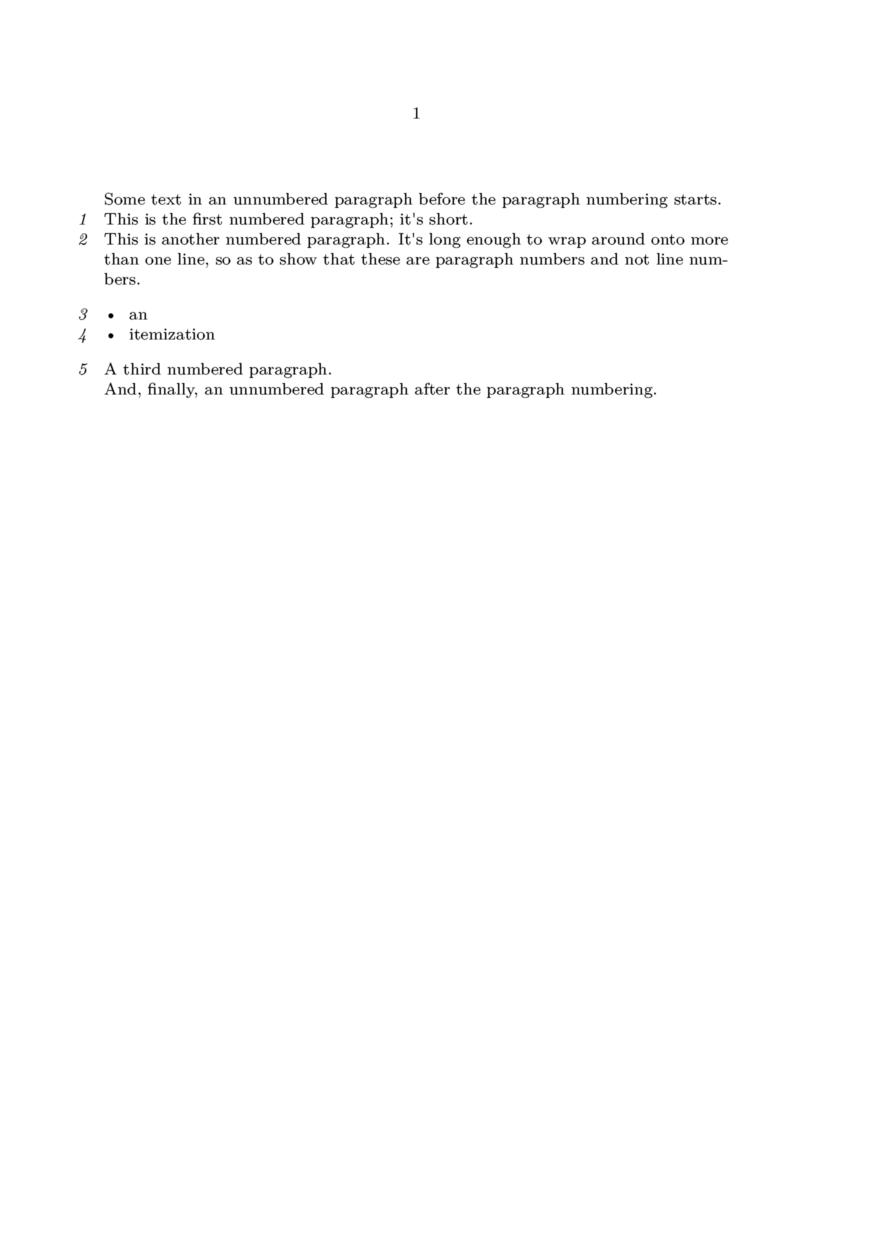Difference between revisions of "Command/setupparagraphnumbering"
< Command
Jump to navigation
Jump to search
(Description, example, See also) |
m (oops, link name mistake) |
||
| Line 55: | Line 55: | ||
== See also == | == See also == | ||
| − | * [[Paragraph | + | * [[Paragraph Enumeration]] for more on this command. |
* [[Paragraph Referencing]] for the t-pararef module, which lets you specify that multiple TeX paragraphs belong to the same ‘block of thought’ paragraph. | * [[Paragraph Referencing]] for the t-pararef module, which lets you specify that multiple TeX paragraphs belong to the same ‘block of thought’ paragraph. | ||
Revision as of 10:40, 13 October 2012
\setupparagraphnumbering
Syntax
| \setupparagraphnumbering[...,...=...,...] | |
| state | start stop reset line |
| style | normal bold slanted boldslanted type cap small... command |
| distance | dimension |
Description
Number every TeX paragraph — that is, everything that ends in \par. This includes formulas and itemization items.
Example
\setuppapersize[A5] \starttext Some text in an unnumbered paragraph before the paragraph numbering starts. \setupparagraphnumbering[state=start,style=italic,distance=0pt] This is the first numbered paragraph; it's short. This is another numbered paragraph. It's long enough to wrap around onto more than one line, so as to show that these are paragraph numbers and not line numbers. \startitemize[packed] \item an \item itemization \stopitemize A third numbered paragraph. \setupparagraphnumbering[state=stop] And, finally, an unnumbered paragraph after the paragraph numbering. \stoptext

See also
- Paragraph Enumeration for more on this command.
- Paragraph Referencing for the t-pararef module, which lets you specify that multiple TeX paragraphs belong to the same ‘block of thought’ paragraph.
Help from ConTeXt-Mailinglist/Forum
All issues with: